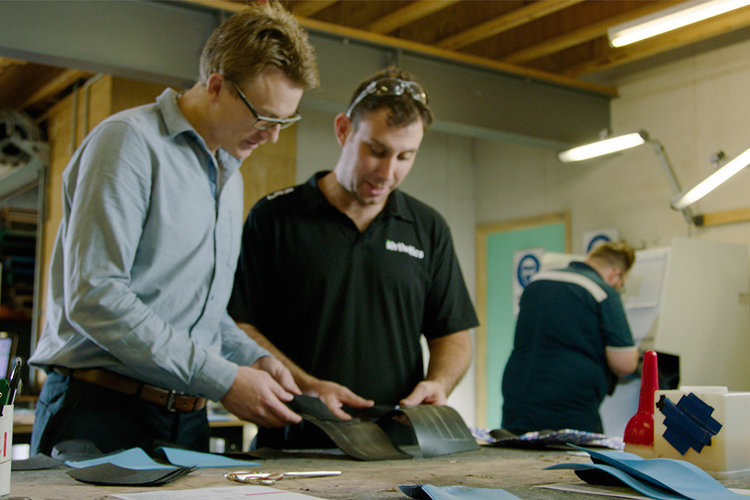A year of rapid innovation at Australia’s leading foot orthotics manufacturer, iOrthotics, is pioneering one of the biggest shifts in Australia’s podiatry industry and priming the company for global expansion.
The Brisbane-based business is one of few orthotic manufacturing laboratories in the world to produce custom-made 3D printed orthotic devices, spearheading the global transition away from traditional subtractive production using polypropylene milling.
A hallmark of the company’s new production process is Australia’s first HP Jet Fusion 3D 4200 printer, which has dramatically enhanced iOrthotics capability to mass customise high quality orthotic devices.
The advanced process has reduced iOrthotics production waste by 95 per cent, which will save around 40 tonnes of plastic landfill this coming year.
The 3D printing technology produces a stronger product that more accurately matches a patient’s foot to correct biomechanical issues.
A subsidiary of the Healthia group, which includes Australia’s largest network of podiatry centres My FootDr, iOrthotics already has an existing customer base of more than 75 podiatry clinics.
The company expects to extend that reach to 130 clinics within two years with the increased scalability, speed and output.
iOrthotics founder and director Dean Hartley said the company was exploring exciting new territory for the podiatry industry.
“Patients depend on orthotics for comfort and wellbeing, and with foot health education and awareness increasing we needed to ensure production was scalable in line with demand for our quality products,” Mr Hartley says.
“We have totally digitised our supply chain making it a better outcome for both podiatrists and patients. A podiatrist can now scan a patient’s foot with our 3D scanner, place a fully-customised order and receive the devices within a week.”
The innovative move from iOrthotics last year attracted funding from the Advanced Manufacturing Growth Centre (AMGC), a Commonwealth supported initiative, to aid technology development and expansion into international markets.
iOrthotics is already supplying clients in the UK, Canada, the US and Singapore with around 13,000 pairs expected to be exported in the next 12 months.
“We have undertaken significant research and development, including partnering with the University of Queensland, to implement 3D printing technology into our orthotic manufacturing processes,” Mr Hartley says.
“This development has enabled international orthotic laboratories to access the immediate benefits of our innovative approach, without the investment in capital, time and intellectual property.
“We will produce up to 50,000 pairs of orthotics this year and this will increase year on year as we extend our reach into new podiatry centres and through expanding our supply globally.”
“With increased capabilities, we also have the opportunity to continue our focus on innovation. We are already undertaking orthotic and prosthetic fabrication and offering a 3D bureau printing service for engineering and industrial clients.”

